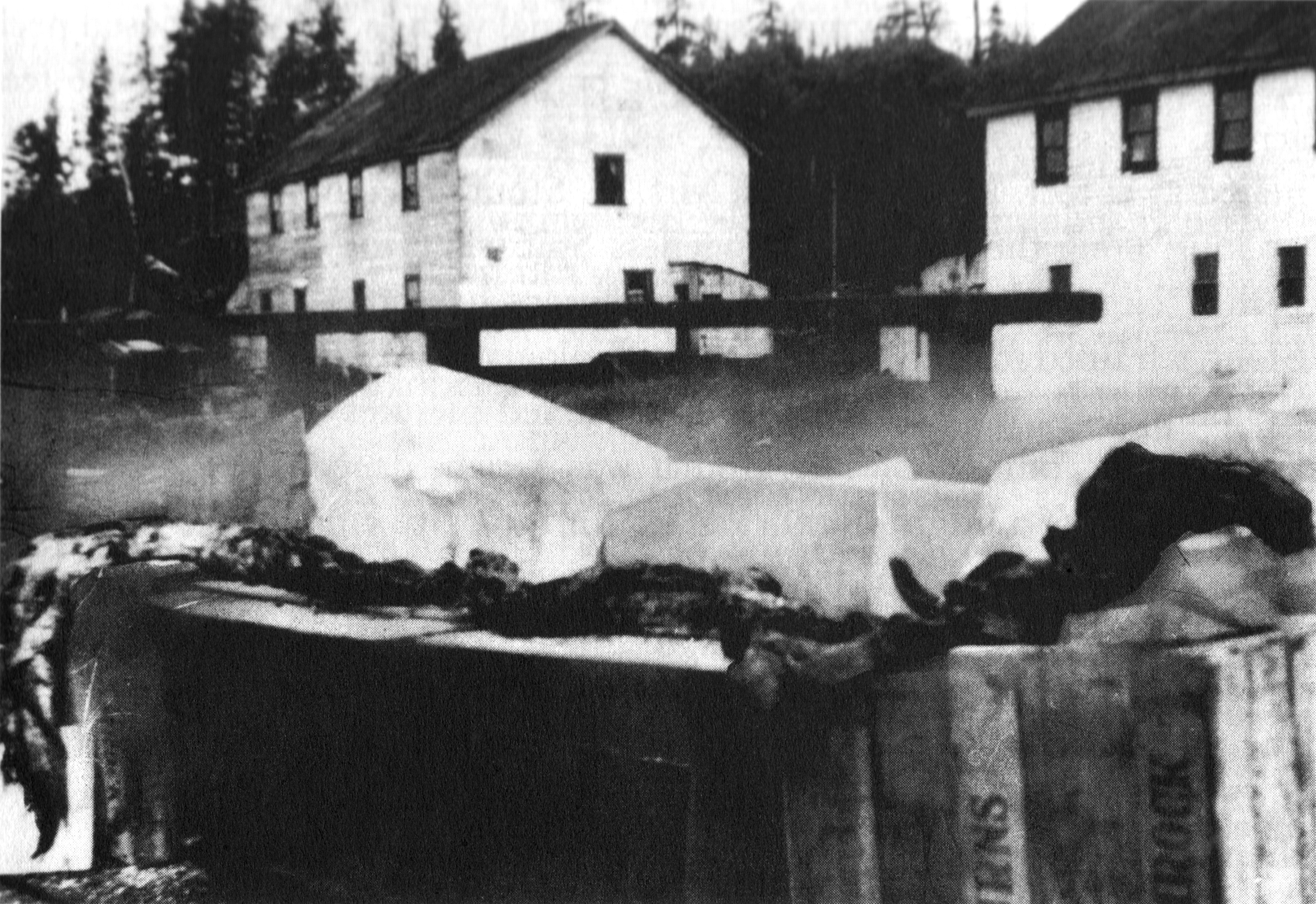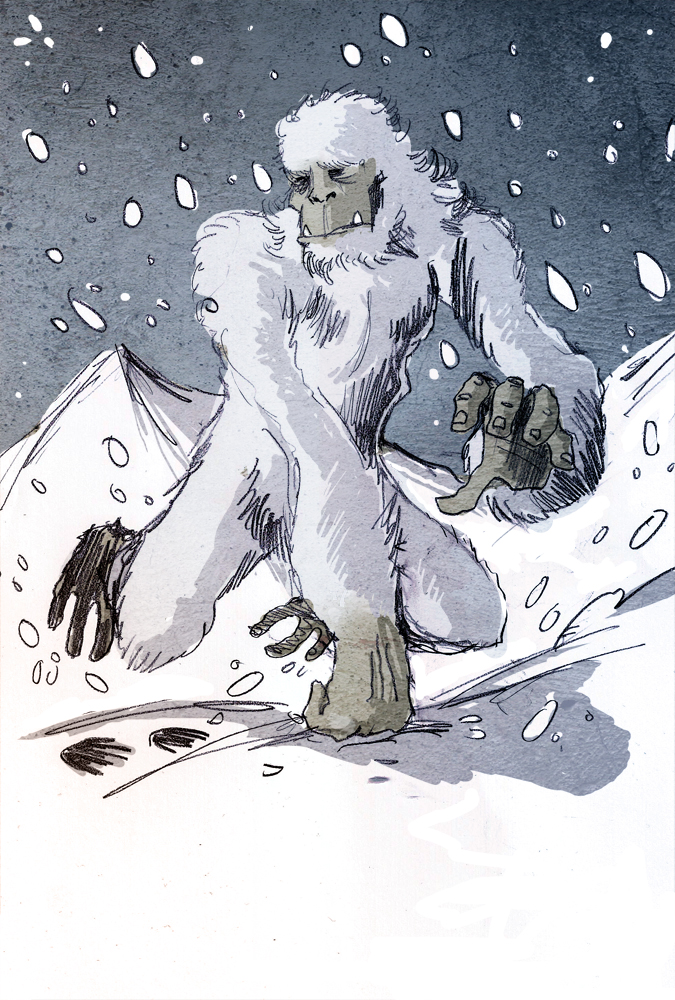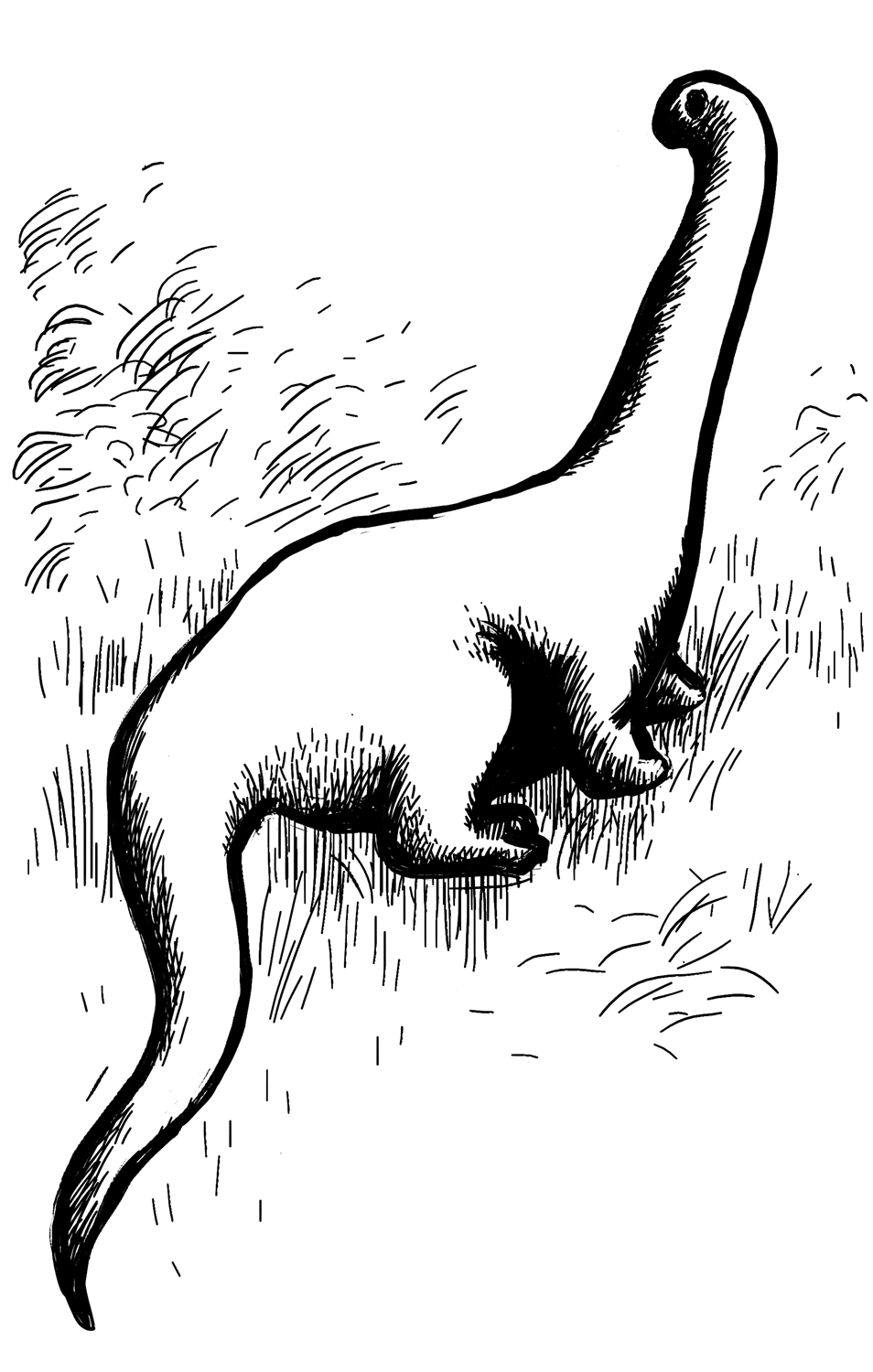|
Cryptozoology
Cryptozoology is a pseudoscience and subculture that searches for and studies unknown, legendary, or extinct animals whose present existence is disputed or unsubstantiated, particularly those popular in folklore, such as Bigfoot, the Loch Ness Monster, Yeti, the chupacabra, the Jersey Devil, or the Mokele-mbembe. Cryptozoologists refer to these entities as ''cryptids'', a term coined by the subculture. Because it does not follow the scientific method, cryptozoology is considered a pseudoscience by mainstream science: it is neither a branch of zoology nor of folklore studies. It was originally founded in the 1950s by zoologists Bernard Heuvelmans and Ivan T. Sanderson. Scholars have noted that the subculture rejected mainstream approaches from an early date, and that adherents often express hostility to mainstream science. Scholars have studied cryptozoologists and their influence (including the pseudoscience's association with Young Earth creationism), noted parallels in crypt ... [...More Info...] [...Related Items...] OR: [Wikipedia] [Google] [Baidu] |
International Society Of Cryptozoology
The International Society of Cryptozoology (ISC) was an organization dedicated to the field of cryptozoology founded in 1982 in Washington, D.C. It ceased to exist in 1998. It was founded to serve as a center for documenting and evaluating topics of interest to cryptozoologists.G. G. Simpson (1984) ''Proceedings of the American Philosophical Society'', Vol. 128, No. 1 (Mar. 30, 1984), pp 1-19 "Mammals and Cryptozoology"''Cryptozoology: Interdisciplinary Journal of the International Society of Cryptozoology'' Vol.12, 1993-1996. ISSN 0736-7023. The study of such animals is known as cryptozoology, and ''Cryptozoology'' was also the title of its journal. The President was Bernard Heuvelmans, and the Vice-President Roy Mackal. The Secretary was J. Richard Greenwell (died 2005), of the University of Arizona.BioScience, Vol. 31, No. 11 (Dec., 1981), page 804 "Cryptozoology Group Forming" Loren Coleman, John Willison Green, and several other prominent cryptozoologists were either Life Me ... [...More Info...] [...Related Items...] OR: [Wikipedia] [Google] [Baidu] |
Karl Shuker
Karl Shuker (born 9 December 1959) is a British zoologist, cryptozoologist and author. He lives in the Midlands, England, where he works as a zoological consultant and writer. A columnist in ''Fortean Times'' and contributor to various magazines, Shuker is also the editor-in-chief of the ''Journal of Cryptozoology'', which began in November 2012. Career Shuker received a B.Sc.(Hons) in zoology from the University of Leeds and a PhD in zoology and comparative physiology from the University of Birmingham. He is a Scientific Fellow of the Zoological Society of London, a Fellow of the Royal Entomological Society, a consultant for the Centre for Fortean Zoology, and a member of the Society of Authors.Newton, Michael, 2005, ''Encyclopedia of Cryptozoology: A Global Guide'' (McFarland & Co, Inc: Jefferson), p. 425: "Today, he hukeris globally recognized as an author and researcher on all aspects of animal life and unexplained phenomena, the heir apparent to Heuvelmans himself." S ... [...More Info...] [...Related Items...] OR: [Wikipedia] [Google] [Baidu] |
List Of Cryptids
Cryptids are animals that cryptozoologists believe may exist somewhere in the wild, but are not believed to exist by mainstream science. Cryptozoology is a pseudoscience, which primarily looks at anecdotal stories, and other claims rejected by the scientific community. While biologists regularly identify new species following established scientific methodology, cryptozoologists focus on entities mentioned in the folklore record and rumor. Entities that may be considered cryptids by cryptozoologists include Bigfoot, Yeti, the chupacabra, the Jersey Devil, the Loch Ness Monster, and the Mokele-mbembe. Scholars have noted that the cryptozoology subculture rejected mainstream approaches from an early date, and that adherents often express hostility to mainstream science. Scholars have studied cryptozoologists and their influence (including the pseudoscience's association with Young Earth creationism), noted parallels in cryptozoology and other pseudosciences such as ghost hunting ... [...More Info...] [...Related Items...] OR: [Wikipedia] [Google] [Baidu] |
Roy Mackal
Roy P. Mackal (August 1, 1925 – September 13, 2013) was a University of Chicago biologist best known to the general public for his interest in cryptozoology. Academic background Born in Milwaukee, Wisconsin, in 1925, Mackal served in the United States Marine Corps during World War II before attending the University of Chicago, where he received his B.S. in 1949 and his Ph.D under the direction of Lloyd Kozloff. in 1953. He spent the rest of his academic career with Chicago as an educator and researcher. Much of his early research with the university was in biochemistry and virology, and during the 1950s, 1960s, and 1970s, he contributed to the university's influential "virus project", studying bacteriophages and the lysogenic cycle. He later served as a professor of zoology. Mackal was a member of the American Society for Biochemistry and Molecular Biology. Cryptozoology Mackal is widely considered to be one of the seminal figures in the subculture of cryptozoology. According ... [...More Info...] [...Related Items...] OR: [Wikipedia] [Google] [Baidu] |
On The Track Of Unknown Animals
''On the Track of Unknown Animals'' is a cryptozoological book by the Belgian- French zoologist Bernard Heuvelmans that was first published in 1955 under the title ''Sur la Piste des Bêtes Ignorées''. The English translation by Richard Garnett was published in 1958 with some updating by the author and with a foreword by Gerald Durrell. A revised and abridged edition was published in 1965, and a further edition in 1995. It is credited with introducing the term cryptozoologyGeorge Gaylord Simpson, ''Proceedings of the American Philosophical Society'', Vol. 128, No. 1 (March 30, 1984), pp1-19 "Mammals and Cryptozoology" and established its author as the "Father of Cryptozoology."Peter Dendle ''Folklore'' Vol 117, No. 2 (2006), pp 190-206 "Cryptozoology in the Medieval and Modern Worlds" Subject As one reviewer explained, it is a book "about animals that ''might'' exist."D. Johnson ''Science New Series'', Vol. 130, No. 3384 (Nov. 6, 1959), pp. 1245-1246 (book review) ''On the Track o ... [...More Info...] [...Related Items...] OR: [Wikipedia] [Google] [Baidu] |
Grover Krantz
Grover Sanders Krantz (November 5, 1931 – February 14, 2002) was an American anthropologist and cryptozoologist; he was one of few scientists not only to research Bigfoot, but also to express his belief in the animal's existence. Throughout his professional career, Krantz authored more than 60 academic articles and 10 books on human evolution, and conducted field research in Europe, China, and Java. He was a member of Mensa and Intertel, high-IQ societies. Outside of Krantz's formal studies in evolutionary anthropology and primatology, his cryptozoological research on Bigfoot drew heavy criticism and accusations of "fringe science" from his colleagues, costing him research grants and promotions, and delaying his tenure at the university. Further, his articles on the subject were rejected by peer-reviewed scholarly journals. However, Krantz was tenacious in his work and was often drawn to controversial subjects, such as the Kennewick Man remains, arguing for their preservation an ... [...More Info...] [...Related Items...] OR: [Wikipedia] [Google] [Baidu] |
Bigfoot
Bigfoot, also commonly referred to as Sasquatch, is a purported ape-like creature said to inhabit the forest of North America. Many dubious articles have been offered in attempts to prove the existence of Bigfoot, including anecdotal claims of sightings as well as alleged video and audio recordings, photographs, and casts of large footprints. Some are known or admitted hoaxes. Tales of wild, hairy humanoids exist throughout the world, and such creatures appear in the folklore of North America, including the mythologies of indigenous people. Bigfoot is an icon within the fringe subculture of cryptozoology, and an enduring element of popular culture. The majority of mainstream scientists have historically discounted the existence of Bigfoot, considering it to be the result of a combination of folklore, misidentification, and hoax, rather than a living animal. Folklorists trace the phenomenon of Bigfoot to a combination of factors and sources including indigenous cultures, the E ... [...More Info...] [...Related Items...] OR: [Wikipedia] [Google] [Baidu] |
Bernard Heuvelmans
Bernard Heuvelmans (10 October 1916 – 22 August 2001) was a Belgian- French scientist, explorer, researcher, and writer probably best known, along with Scottish-American biologist Ivan T. Sanderson, as a founding figure in the pseudoscience and subculture of cryptozoology. His 1958 book ''On the Track of Unknown Animals'' (originally published in French in 1955 as ''Sur la Piste des Bêtes Ignorées'') is often regarded as one of the most influential cryptozoology texts. Life Heuvelmans was born on 10 October 1916 in Le Havre, France, and raised in Belgium and earned a doctorate in zoology from the Free University of Brussels (now split into the Université Libre de Bruxelles and the Vrije Universiteit Brussel). Heuvelmans was a pupil of Serge Frechkop, a proponent of the Theory of Initial Bipedalism. In 1939, his doctoral dissertation concerned the teeth of the aardvark. During World War II he had escaped from a Nazi prison camp and later worked as a jazz singer in Paris.M ... [...More Info...] [...Related Items...] OR: [Wikipedia] [Google] [Baidu] |
Yeti
The Yeti ()"Yeti" ''Random House Webster's Unabridged Dictionary''. is an ape-like creature purported to inhabit the Himalayan mountain range in Asia. In western popular culture, the creature is commonly referred to as the Abominable Snowman. Many dubious articles have been offered in an attempt to prove the existence of the Yeti, including Anecdotal evidence, anecdotal visual sightings, disputed video recordings, photographs, and plaster casts of large footprints. Some of these are speculated or known to be hoaxes. Folklore studies, Folklorists trace the origin of the Yeti to a combination of factors including Sherpa people, Sherpa folklore and misidentified fauna such as Himalayan brown bear, bear or yak. The Yeti is commonly compared to Bigfoot of North America, as the two subjects often have similar physical descriptions. ...
|
Donald Prothero
Donald Ross Prothero (February 21, 1954) is an American geologist, paleontologist, and author who specializes in mammalian paleontology and magnetostratigraphy, a technique to date rock layers of the Cenozoic era and its use to date the climate changes which occurred 30–40 million years ago. He is the author or editor of more than 30 books and over 300 scientific papers, including at least 5 geology textbooks. Stephen Jay Gould cited Prothero's research on the lack of response to climate change in mammals from the Eocene, Oligocene and Pleistocene epochs to support the punctuated equilibrium model of evolution. He called Prothero "the best punctuated equilibrium researcher on the West Coast". Biography Prothero grew up in the Glendale, California area, the son of Clifford R. Prothero (1920–2004), a technical illustrator for Lockheed, and Shirley M. (McDonald) Prothero (1924–2016), an artist and homemaker. He attended the University of California, Riverside where he studie ... [...More Info...] [...Related Items...] OR: [Wikipedia] [Google] [Baidu] |
Pseudoscience
Pseudoscience consists of statements, beliefs, or practices that claim to be both scientific and factual but are incompatible with the scientific method. Pseudoscience is often characterized by contradictory, exaggerated or falsifiability, unfalsifiable claims; reliance on confirmation bias rather than rigorous attempts at refutation; lack of openness to Peer review, evaluation by other experts; absence of systematic practices when developing Hypothesis, hypotheses; and continued adherence long after the pseudoscientific hypotheses have been experimentally discredited. The demarcation problem, demarcation between science and pseudoscience has scientific, philosophical, and political implications. Philosophers debate the nature of science and the general criteria for drawing the line between scientific theory, scientific theories and pseudoscientific beliefs, but there is general agreement on examples such as ancient astronauts, climate change denial, dowsing, evolution denial, ... [...More Info...] [...Related Items...] OR: [Wikipedia] [Google] [Baidu] |
Mokele-mbembe
In cryptozoology, the Mokele-mbembe (also written as "Mokèlé-mbèmbé"), Lingala for "one who stops the flow of rivers", is a water-dwelling entity that supposedly lives in the Congo River Basin, sometimes described as a living creature, sometimes as a spirit. Those that allegedly saw the entity describe it as a large quadrupedal herbivore with smooth skin, a long neck and a single tooth, sometimes said to be a horn. In early to mid 20th century, the entity would become a point of focus among adherents of the pseudoscience of cryptozoology, and young Earth creationism, resulting in numerous expeditions led by cryptozoologists and funded by young Earth creationists and other groups with the objective to find evidence that invalidates or contradicts the scientific consensus regarding evolution. Paleontologist Donald Prothero remarks that "the quest for Mokele-Mbembe... is part of the effort by creationists to overthrow the theory of evolution and teaching of science by any means ... [...More Info...] [...Related Items...] OR: [Wikipedia] [Google] [Baidu] |




.png)
